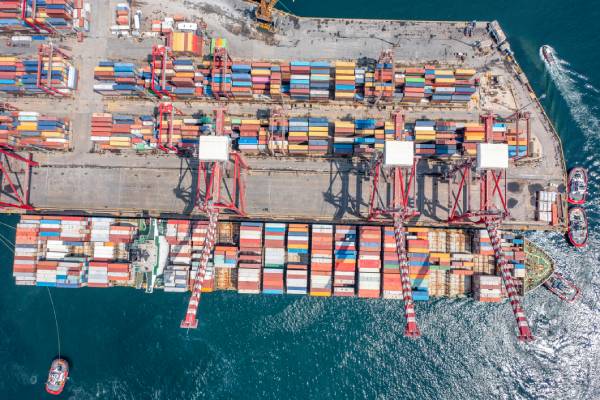
What will be driving freight in 2025? According to Keith Prather of Armada Corporate Intelligence, the freight landscape is being shaped by a complex mix of tariff concerns, smarter inventory planning, and steady retail demand. In a recent Logistics Management Podcast with Jeff Berman, Prather outlined five critical trends that every shipper should be monitoring:
1. Destocking Is Mostly Complete — But Freight Volumes Are Still Uncertain
After two years of inventory correction, Prather says the destocking cycle is finally over. “We knew the inventories were balanced and thought it would be a really good freight year,” he said. And January and February showed early promise.
But there’s a catch: some of that freight strength may have been pulled forward. “Companies were trying to get ahead of tariff risk,” Prather explained, adding that some freight activity expected in Q2 might have been pushed into Q1.
2. Tariff Fears May Have Shifted Demand Earlier
Between fears of reciprocal tariffs, a potential port strike, and other policy changes, many companies tried to move goods earlier than usual this year. That creates a ripple effect: “We’re kind of wondering how much of that was really just pulled forward freight activity,” Prather said. That makes it harder to assess the true strength of freight demand as the year progresses.
3. Inventory Levels Are Stable — No Signs of a 2022 Repeat
While concerns about overbuilding are always present, Prather doesn’t see signs of a glut. “We’re not going back into a 2022 scenario where warehouses are full and companies overreact,” he said. That’s welcome news after the so-called “freight recession” that followed the pandemic-era stockpiling.
The takeaway? Shippers are being smarter about inventory, and that’s helping keep freight flows more balanced.
4. Retail and Consumer Staples Are Still Strong
Even with uncertainty around inflation and interest rates, Prather says key sectors are holding up. “Consumer staples, for instance, in retail, are still doing really well. We see no pullback.” That steady demand could help support freight activity through midyear, especially in categories less impacted by tariffs.
5. Technology Is Driving Smarter Freight Decisions
Higher costs — from transportation to capital — have made dynamic decision-making essential. Fortunately, the tools are there. “We’ve invested so much in technology as an industry,” Prather noted. “Now we can kind of quickly calculate and weigh the differences between freight rates, currency exchange rates, and the impact of tariffs.”
That tech advantage is helping companies stay nimble in an unpredictable environment, adjusting procurement and transportation plans in real time based on market conditions.